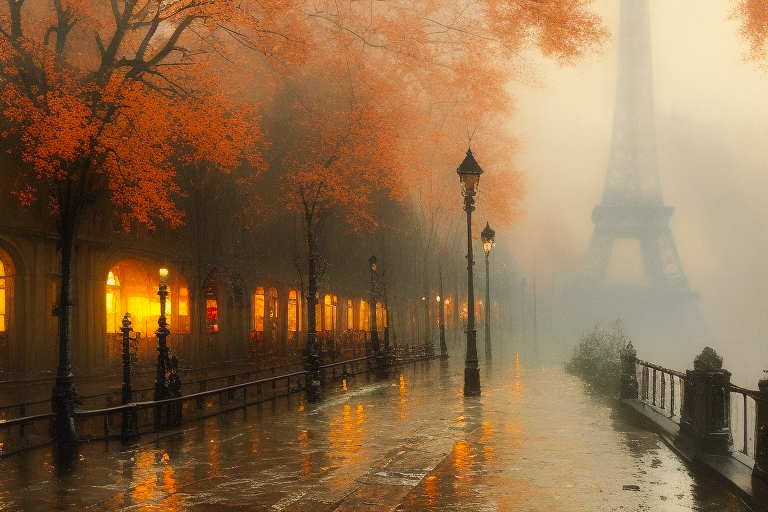Similar to standard text-to-image prompting, negative prompting specifies the words you don’t want to appear in the final image. Technically speaking, the coded negative prompt functions as an elevated anchor that Stable Diffusion strays from. Yet, in this article, we are going to discuss Stable Diffusion Negative Prompts.
When using Stable Diffusion, you can specify what you don’t want to appear in the output photos by using the negative prompt parameter. When specified, it directs the generating process to exclude elements from the image that are mentioned in the text. In this article, we are going to explore more Stable Diffusion Negative Prompts.
Stable Diffusion Negative Prompts – A negative prompt may stop the generation of some items, or styles, or correct some visual anomalies. In this article, we will guide you with Stable Diffusion Negative Prompts and how to use the same.
What Is Stable Diffusion Negative Prompts?
In order to notify the stable diffusion model whatever, we don’t want to appear in the resulting image, we may also add a negative prompt to the model. This capability is frequently used to delete elements from the initially created image that a user doesn’t wish to see. Although Stable Diffusion accepts data in the form of “prompts” in natural speech, it finds it challenging to comprehend negative terms like “no,” “not,” “unless,” and “without.” To fully manage your prompts, you must therefore employ negative prompting.
How To Use Stable Diffusion Negative Prompts?
Here are a few instances of negative prompts in action so you can see what can be accomplished and how to make adjustments.
Remove Objects
Removing anything from the image that you don’t want to be shown is the most obvious application. Consider creating a painting of Paris on a wet day. You want to create another one, however, the street is vacant. You can add the unfavorable prompt “people” while still using the same seed value, that specifies the image. You get a picture with the majority of people gone.
Image Modifying
With negative prompts, you can encourage Stable Diffusion to make small adjustments. The only thing you really want to change is the subjects a little bit. It appears to be windy since the hairs are drifting. Let’s make things lighthearted by using the unfavorable cue “windy.” Emma seems a little… undeveloped in the original photo. Using the pejorative phrase “underage” gives her a more mature appearance.
Stable Diffusion Negative Prompts Examples
Following are some of the Stable Diffusion Negative Prompts that we have found users are implementing while using Stable Diffusion V2. Go through the following prompts and let us know if you can add more:
#1 poorly Rendered face
#2 poorly drawn face
#3 poor facial details
#4 poorly drawn hands
#5 poorly rendered hands
#6 low resolution
#7 Images cut out at the top, left, right, and bottom.
#8 bad composition
#9 mutated body parts
#10 blurry image
#11 disfigured
#12 oversaturated
#13 bad anatomy
#14 deformed body features
Wrapping Up
Hope, this article, enlightened you with Stable Diffusion Negative Prompts. We have shown two examples of negative prompts using V2. Let us know which negative prompts worked best for you. Share your thoughts in the comment box. Follow Deasilex for more updates on Stable Diffusion.
Frequently Asked Questions
Q1. What Was The Stable Diffusion Model Trained On?
The foundational dataset for Stable Diffusion was the 2b English language label subset of LAION 5b, a global internet crawl produced by the German nonprofit LAION. The model was trained by the CompVis team at the University of Heidelberg in accordance with German law. No particular category was either included in or excluded from the underlying dataset.
Q2. Can Artists Opt-In Or Opt-Out Include Their Work In The Training Data?
The LAION 5b model data did not have an opt-in or opt-out option. It is meant to serve as a generic illustration of how words and pictures interact on the Internet. We are developing an opt-in and opt-out mechanism for artists and others that services can utilize in collaboration with top organizations in the future for different models. The outputs of this system are not exact duplicates of any one piece because it learns from principles.
Q3. Will I Need To Know How To Code To Run SD Locally?
No, but you ought to feel at ease using a computer. You must set up certain software and adhere to the open-source community’s guidelines. You may discover plenty of tips written by community members on how to install and run Stable Diffusion locally on your machines if you ask around in Discord. On the Stable Diffusion Discord channel, please share your discoveries with the group.
Q4. Stable Diffusion Is Open Source, Why Does Dreamstudio Cost Money?
While Stability AI has released the Stable Diffusion model open source, the DreamStudio website was under development as a service to make it possible for anybody to use this potent creative tool without the need for software installation, coding expertise, or a powerful local GPU.
DreamStudio charges fees to cover the computational expenses associated with producing each image, and as technology advances, we are aiming to make the fees less expensive.
Q5. What Is The Copyright On Images Created Through Stable Diffusion Online?
Stable Diffusion Online images are completely open source and clearly covered by the CC0 1.0 Universal Public Domain Dedication.

